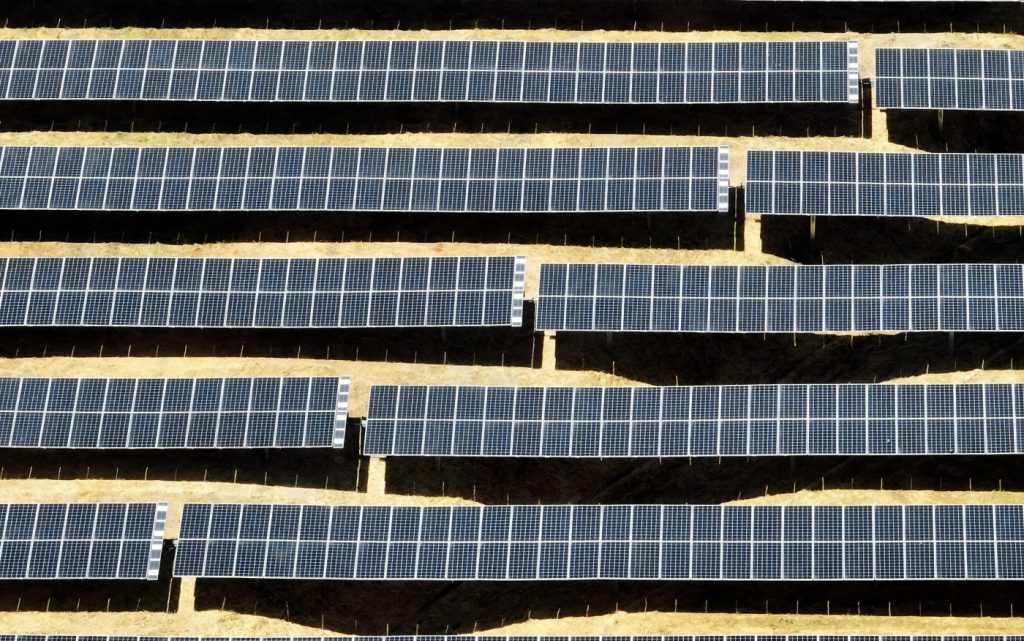The speed of the energy transition in recent years can easily make people underestimate the scale of the challenge that lies ahead. That could be a fatal mistake.
Consider the main target from last September’s Group of 20 meeting — a tripling of renewable power globally by 2030. It doesn’t sound that much of a stretch: The same figure doubled over the eight years through 2022, so a modest push on the accelerator ought to be enough to get us over the line.
It’s much harder than that, though. The grid by the end of this decade needs to have about twice as many gigawatts of generators connected to it as the current one we’ve spent more than a century building, and all of the net increase has to come from clean power.
We are still not building enough solar and wind farms, nor enough factories for the components they’ll use, to make the switch work. Yet President Joe Biden’s justification for doubling tariffs on imported solar to 50% is that, to the contrary, the world has too many production lines for green tech. The low costs of Chinese-made solar panels are a result of “policy-driven overcapacity” in manufacturing, he argued last month, “flooding global markets with artificially cheap solar modules and panels.”
The trouble is, he’s going to need all of those production lines if he’s to meet his target of decarbonizing America’s electricity grid by 2035.
World falling short
That’s essentially the conclusion of a study of countries’ energy transition plans by the International Energy Agency, which found the world is falling well short of the tripling in renewables that leaders have committed to. Installations will roughly double, instead, and even reaching that target will require the US and Europe to drastically increase their pace of connecting new generators.
The admittedly vast fleets of factories installed in recent years to build green technology are barely up to the scale of the challenge.
Major solar module makers can turn out roughly 830 GW of panels annually, according to BloombergNEF. It’s an astonishing number, sufficient to replace about 4% of the world’s electricity demand every year. Even so, it’s not enough to get us to zero — because electricity demand is growing, too, at a scarcely less headlong rate. In a world that limits warming to 1.75 degrees Celsius, the number of panels will exceed the capacity of the production lines available to assemble them as soon as 2028.
It’s worse still with wind. Demand from new farms is pretty much in excess of manufacturing capacity right now compared even to less ambitious warming targets. By the end of the decade, it will be far ahead — meaning the turbines we need simply won’t get built.
Keep reducing costs
The situation is particularly egregious in the US. Even 2023’s rates of renewable build fell far short of what will be needed over the coming decade if Biden’s promise of a carbon-free grid by 2035 is to have any chance of materializing. Under most scenarios of what that looks like, we need to be connecting wind at nearly 13 times current rates and solar at 3.5 times where we were in 2023. Nuclear start-ups need to accelerate more than fivefold, while the pace of building battery and hydro power storage must double.
Related Articles
If worker shows up angry, shoot him, manager at Bay Area solar giant Sunrun allegedly ordered
California sides with big utilities, trimming incentives for community solar projects
California’s ‘community solar’ rules deal new blow to industry
Opinion: Rooftop solar and batteries remain valuable investments
Letters: Busy roads | Expanded solar | Alternative technologies
What’s most remarkable is that we’re having this debate about manufacturing so soon after the inflationary crisis of 2021. Lest we forget, that happened largely because capacity idled or shut down during the pandemic found itself unable to cope with the surge in demand as industry and consumption started to recover, leaving carmakers short of semiconductors, shipping lines short of container boxes, and builders short of lumber.
The result of capacity in excess of demand is a virtuous cycle of falling prices, innovation and industry consolidation. Capacity that falls short of demand causes only inflation and shortages. China’s “overcapacity” is simply the policy Beijing has adopted to avert that inflationary outcome.
It’s that industrial policy that has caused the price of solar panels to fall from about 90 cents per watt in early 2012 — when the Obama administration first imposed tariffs on Chinese cells, arguing they were being sold at below market value — to just over 10 cents a watt now. We should welcome that. Reducing the cost of green power is the single best thing the world can do if we’re to escape catastrophic warming in our lifetimes. Chinese clean technology isn’t “artificially cheap,” to use the terminology that’s used in Washington these days. It’s just cheap.
David Fickling is a Bloomberg columnist. ©2024 Bloomberg. Distributed by Tribune Content Agency.


